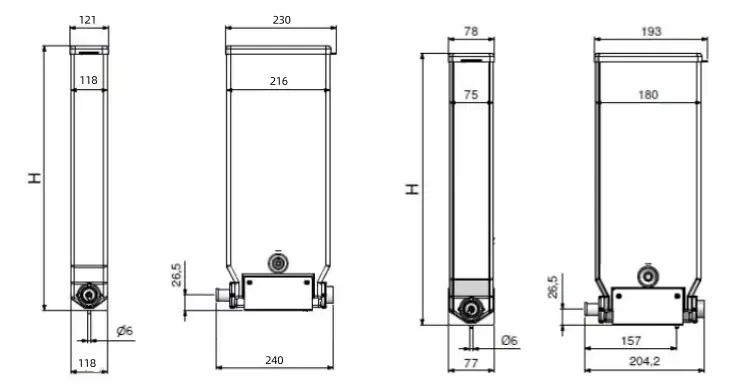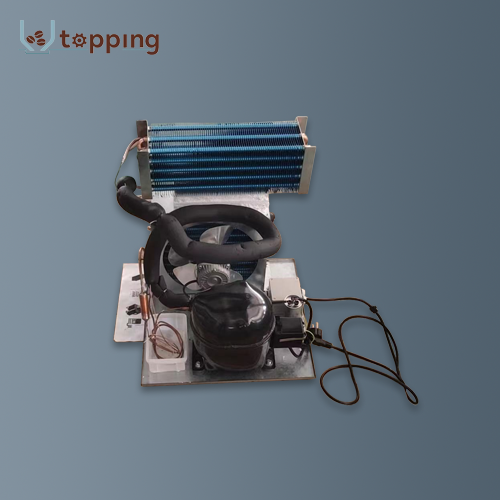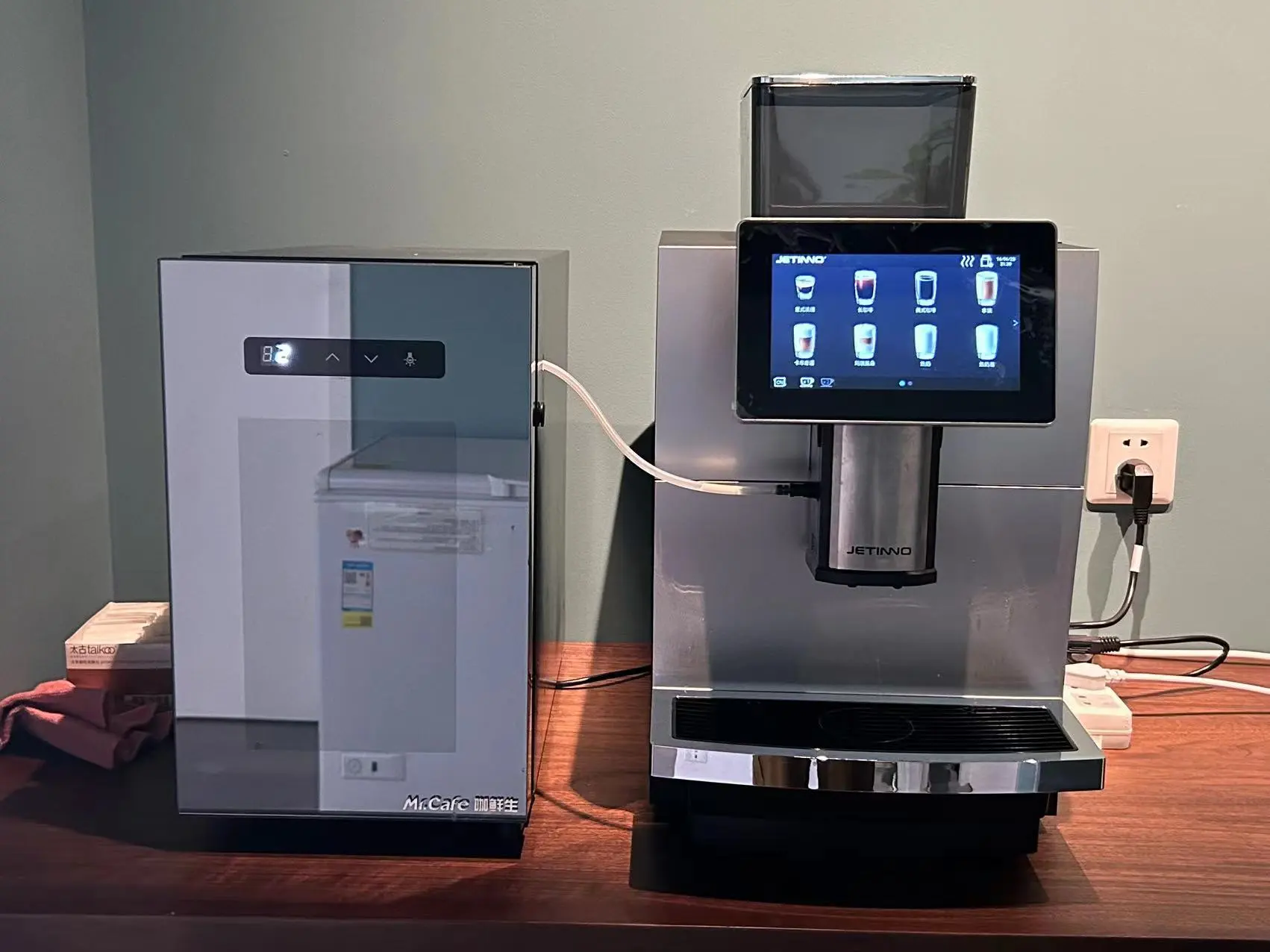Why it is important to store coffee making ingredients appropriately?
2024-10-11 14:40:30
Introduction
Proper storage of coffee-making ingredients is crucial for preserving their quality, flavor, and safety. Whether you're a home brewer or managing a coffee vending machine, how you store your coffee beans, grounds, and other ingredients can significantly impact the taste and aroma of the final cup. In this blog, we will delve into why it is important to store coffee-making ingredients appropriately and explore how Coffee Vending Machine Ingredient Canisters play a vital role in this process. We will address three key questions to provide a comprehensive understanding of the topic.
How Do Coffee Vending Machine Canisters Preserve Ingredient Quality?
Coffee vending machine canisters are designed to maintain the freshness and quality of the ingredients they store. These canisters must ensure that coffee beans, grounds, milk powders, and other components are kept in optimal conditions to prevent degradation.
Material Matters
The material of the powder canister plays a significant role in preserving the quality of the ingredients. Most high-quality canisters are made from food-grade plastic or stainless steel. These materials are chosen because they are non-reactive, meaning they do not alter the flavor or aroma of the coffee. Stainless steel is particularly beneficial as it provides excellent protection against light and air, both of which can degrade coffee quality over time (Real Simple)(Taste of Home).
Airtight Seals and Valves
Airtight seals are essential for preventing air and moisture from entering the canisters. Oxygen is a major enemy of coffee freshness, leading to oxidation and staleness. Airtight canisters with proper seals ensure that the coffee remains fresh by minimizing its exposure to air. Additionally, some advanced canisters come equipped with one-way valves that allow carbon dioxide, released by freshly roasted coffee beans, to escape without letting oxygen in. This feature is particularly useful for maintaining the freshness of the beans (Tasting Table)(Food Revolution Network).
Consistent Temperature and Humidity
Maintaining a consistent temperature and humidity level within the canister is crucial. Coffee ingredients should be stored in a cool, dry place to prevent the growth of mold and the degradation of flavors. Canisters that provide insulation against temperature fluctuations and humidity changes are ideal for preserving the quality of coffee-making ingredients (Real Simple)(Tasting Table).

What Are the Best Practices for Storing Coffee Beans and Grounds?
Storing coffee beans and grounds properly is essential for ensuring that your coffee retains its rich flavor and aroma. Here are some best practices to follow:
Use Airtight Containers
To keep coffee beans and grounds fresh, it is essential to use airtight containers, such as Coffee Vending Machine Ingredient Canisters. These containers prevent exposure to air, which can lead to oxidation and a stale taste. The best containers are those made of opaque materials, such as stainless steel or dark-colored plastic, which also protect the coffee from light (Taste of Home)(Food Revolution Network).
Store in a Cool, Dry Place
Coffee should be stored in a cool, dry place away from direct sunlight and heat sources. Excessive heat can cause the oils in coffee beans to go rancid, while moisture can lead to mold growth. The ideal storage temperature for coffee is around room temperature, and it should be kept in a location with stable humidity levels (Real Simple).
Whole Beans vs. Ground Coffee
Whole coffee beans retain their freshness much longer than ground coffee. This is because ground coffee has a larger surface area exposed to air, leading to faster oxidation. For the best flavor, grind coffee beans just before brewing. If you must store ground coffee, ensure it is kept in an powder canister and used within a few weeks (Tasting Table).
Avoid Freezing
While freezing coffee beans or grounds can extend their shelf life, it is generally not recommended unless you have a large quantity that you cannot use quickly. Freezing can cause condensation when the coffee is thawed, introducing moisture that can degrade the quality. If you do freeze coffee, be sure to store it in a vacuum-sealed bag and allow it to come to room temperature before opening (Real Simple).
How Can Improper Storage Affect the Taste of Your Coffee?
Improper storage of coffee-making ingredients can have a significant impact on the taste and quality of your coffee. Understanding these effects can help you avoid common pitfalls and ensure that every cup you brew is as delicious as possible.
Stale and Flat Flavors
Exposure to air is one of the primary reasons for stale and flat flavors in coffee. When coffee beans or grounds are exposed to air, they undergo oxidation, which degrades the oils and compounds responsible for the rich flavors and aromas. This results in coffee that tastes stale and lacks the vibrant, complex flavors that fresh coffee should have (Taste of Home).
Bitter and Sour Notes
Moisture can also negatively impact the taste of coffee by causing the ingredients to clump together and form mold. Moldy coffee not only tastes bad but can also be harmful to your health. Additionally, moisture can cause the coffee to absorb odors from its surroundings, leading to off-flavors that can make your coffee taste bitter or sour (Food Revolution Network).
Loss of Aromatic Compounds
Coffee's aroma is a significant part of its overall sensory experience. Improper storage can lead to the loss of aromatic compounds, making the coffee less fragrant and enjoyable. This is particularly true for ground coffee, which has a larger surface area and is more susceptible to losing its aromatic oils over time (Taste of Home)(Tasting Table).
Contamination
Cross-contamination is another risk of improper storage. If coffee-making ingredients are stored in containers that previously held other substances, they can absorb flavors and odors from those substances. This can result in coffee with undesirable flavors that detract from the intended taste profile (Food Revolution Network).
Preservation of Nutritional Value
Proper storage not only preserves the flavor and aroma of coffee but also helps maintain its nutritional value. Coffee contains antioxidants and other beneficial compounds that can degrade when exposed to air, light, and moisture. By storing coffee correctly, you can ensure that you are getting the maximum health benefits from each cup (Real Simple)(Tasting Table).
Conclusion
In conclusion, storing coffee-making ingredients appropriately is essential for maintaining their quality, flavor, and safety. By understanding the importance of proper storage and implementing best practices, you can enjoy fresh, delicious coffee every time. Regular cleaning and maintenance of Coffee Vending Machine Ingredient Canisters, using airtight and opaque containers, and keeping coffee in a cool, dry place are all effective strategies for preserving the freshness and flavor of your coffee.
References
1. Real Simple. (2023). How to Store Coffee: We Settle the Pantry vs. Freezer Debate. Retrieved from Real Simple.
2. Taste of Home. (2018). How to Make a Good Cup of Coffee (8 Tips from a Barista). Retrieved from Taste of Home.
3. Tasting Table. (2022). Why It's So Important To Store Cold Brew Coffee In An Airtight Container. Retrieved from Tasting Table.
4. Food Revolution Network. (2024). Food Storage & Preservation: How To Store Food Properly. Retrieved from Food Revolution Network.
Send Inquiry
Related Industry Knowledge
- What is a volumetric counter?
- Are There Eco-Friendly Options for Coffee Vending Machine Spare Parts?
- What Maintenance Does a Coffee Grinder Motor Require?
- What is a coffee brewing Unit Dimension ?
- Coffee Sieve Sizes
- How Much Coffee Beans to Put in a Hopper?
- How to use a Coffee Vending Machine Ingredient Canisters?
- Do coffee machines have built in grinder?
- How does the valve coffee machine work
- What Are Coffee Vending Machine Ingredient Canisters Made Of?


.webp)







